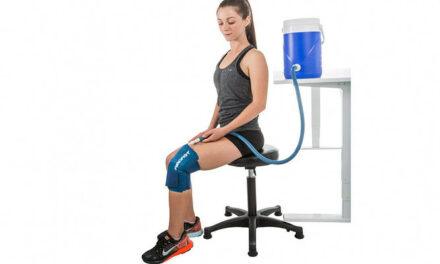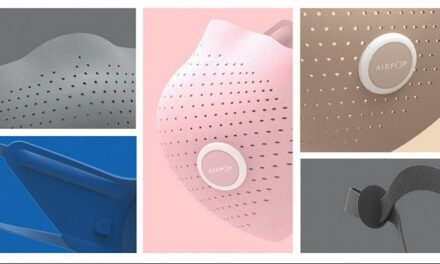If you have ever suffered from sciatica, will understand how sciatica pain can make you feel miserable. It makes it difficult for you to carry out your daily activities.
There are many pain medications are available in the market, but the question is, how effective are they in suppressing sciatica pain? And, will they provide a long term safe and sustainable pain relief?
Luckily enough, there are some better ways to soothe or reduce the sciatic pain in your own home at your convenience even without taking any pain relief medicines. One of the reputable ways is to use the Transcutaneous Electrical Nerve Stimulation (TENS) machines.
The TENS machines are used for stimulating the nerves electrically for pain relief. It is a good way to manage sciatica; it uses electricity to stimulate your sciatic nerve to reduce the pain from the nerve.
It is very effective and works efficiently to soothe pain and improve the lives of people who suffered from pain, especially severe illnesses such as sciatica.
Before diving further into TENS for Sciatica and Best TENS Unit Placement for Sciatica Pain, let’s find out what sciatica really means as a ‘medical condition’.
What is sciatica?
Sciatica is the pain result by long-term irritation of the sciatic nerve.
The sciatic nerve is the longest and widest nerve in our body, the nerve starts from the lower back, runs through the buttocks, down the back of both legs and ends just below the knee. It controls various muscles in the lower legs and supplies sensation to the skin of the foot and most of the lower leg.
Tip: Muscle pain is different from nerve pain. We have previously covered all the differences.

“sciatica” simply means that a sciatic nerve is being compressed. This results to pain on one particular side of the buttock, in the lower back or at the back of that particular leg.
The pain severity can range from mild to severe.
Sciatica is a ‘symptom’, not a ‘medical condition’. It is a symptom that shows that the sciatic nerve is irritated.
The people that have a higher risk of developing sciatic nerve pain are
- People in their 30s and 40s
- People whose jobs require carrying or lifting heavy loads for long periods.
- People who are physically inactive or who sit for long periods.
Sciatica, in most cases, can heal on its own. About 50% of people with sciatica will recover within 6 weeks. But if pain persists for more than 4-8 weeks, imaging tests like X-ray or MRI may be carried out to help identify the cause of sciatica.
Signs and Symptoms of sciatica
Sciatica can cause back pains and legs pains.
The symptoms of sciatica are:
- An intense pain anywhere along the sciatic nerve which is from the lower back, through the hips’ buttock or groin, and continued down the back of either leg.
- The sensation of a ‘numbness’ in the leg continued along the nerve.
- A ‘tingling’ sensation on the feet and toes.
Sciatica pain severity can range from mild to moderate to severe and may be worsened by sitting for long periods.
Tip: Here are the complete lists of causes for upper leg pain, knee pain, calf pain
and foot pain. They are not the same!
Causes of sciatica
Sciatica can be caused by any of the following:
- A herniated disc or disc bulge, which is the most common cause of sciatica. The majority, over 90% of Sciatica, comes as a result of herniated (slipped) disk. It is referred to a slipped disc when a disc has shifted from its normal position and puts pressure
on the sciatic nerve. - Degenerative Disc Disease is another cause of sciatica pain, common among the elderly. Disc degeneration can cause sciatic pain, especially if it affects the lower back.
- Lumbar spinal stenosis is another reason causing sciatica. This condition is also common among the elderly.
As we age, the vertebrae shrink becoming more narrow and leaving no space for the spinal cord leading to pain or tingling sensation.
- Spondylolisthesis, a situation whereby a disc slips and fall over the vertebra below it. This occurs if the disc is fractured.
- Tumors within the spine which may compress the root of the sciatic nerve.
- Infection affecting the spine.
- Cauda equina syndrome, which is a serious condition requires immediate medical attention. This condition affects the nerves in the lower part of the spinal cord, although it is a rare condition.
- Injury within the spine.
Tip: What is a disc protrusion? What is a disc bulging? Do you think that a bulging disc can heal on its own? That was an interesting topic we covered in another article.
Tip: Here is the treatment for a prolapsed disc.
Given now we have a good understanding of what sciatica is, let’s look into electrical stimulation options available. They all fit under electrotherapies.
Electrotherapies for sciatica
Electrotherapy is a form of treatments that involve the application of specific energy sources to the body to reduce pain, repair tissues, improve circulation, promote bone growth and strengthen the muscles.
Overall, these therapies meant to improve physical functions of the body.
The electrotherapies used for sciatica are below.
1. Transcutaneous electrical nerve stimulation (TENS)
TENS is the most common electrotherapy used for sciatica.
It involves the use of a battery-operated device which delivers small electric pulse through the pads placed on the skin on the affected part of the body. These electrical impulses stimulate the production of endorphins, which are the body’s natural painkillers and can relieve pain and relax the muscles.
2. Percutaneous electrical nerve stimulation (PENS)
PENS works with the same principle as TENS, but the electrode needles are inserted into the skin, into the subcutaneous tissue. In this case, the current is delivered directly to the affected tissue to produce a positive sensation in the tissue.
3. Interferential therapy (IFT)
IFT involves the use of several electrodes or sometimes suction cups, which are usually placed on the skin on the affected part of the body. Then an electrical current with two different frequencies that interfere with one another is sent to the local tissues to produce a medium frequency current within the affected tissues.
The technology meant to stimulate local nerves in order to modulate pain, reduce swelling, stimulate local muscles or to promote healing.
4. Low-level laser therapy (LLLT)
Here a single wavelength of light is applied to the skin over the injured part of the body using a probe. It is believed that the light is absorbed in the tissues results in local heating and affects the local chemical activity and cellular behavior of the tissue.
The laser therapy, because of the above effects, is alleged to have an anti-inflammatory effect and promote tissue repair.
5. Therapeutic ultrasound
Therapeutic ultrasound involves the administering of high-frequency sound waves to the part of the body injured through a probe. The sound wave, depending on the frequency used, penetrates the tissues at different depths.
When applied continuously, therapeutic ultrasound has a healing effect on the tissues, which improves blood flow and speed up tissue healing.
[et_bloom_locked optin_id=optin_3][/et_bloom_locked]
Does a TENS unit help with sciatica?
If you are wondering if TENS can be used for relieving sciatica pain, the answer to this question is ‘yes’.
TENS can be used to relieve the radiating, and debilitating shooting pains that most patients often experience as a result of sciatica pain.
And, most cases, there is no need for you to continue taking pain killers that are not working or to be worried that you may become addictive to stronger narcotics. And, their side effects.
Unlike the painkillers, TENS is safe, non-addictive and proven to be more effective. TENS can help to reduce your discomfort. And, you can use it at your own convenience – at anytime or place.
Tip: The technology behind TENS is different from EMS, the electrical muscle stimulation (EMS). Accordingly, the health benefits of EMS too.
How a TENS unit relieve sciatica pain?
The low-voltage electrical pulse sent to your skin from a TENS unit can induce the production of endorphins which is a natural pain killer produced by your body. As the unit stimulates your nerves, more and more endorphins travel across your skin.
These endorphins eventually confuse pain signals and block them from entering your nervous system so that you wouldn’t feel the pain.
When the TENS unit sends electrical impulses to your body, it helps to reduce the sciatica pain you feel, and you will be relieved.
TENS units are easy to use and very affordable. It is only the electrode pads that are the part that you need to replace.
There are two different ways to use a TENS machine.
High pulse rate
This is the normal TENS machine pulse rate which is about 90 -130 HZ.
This pulse rate sends electrical impulses that help to block the pain message that is sent to your brain. As a result of this, the pain you feel can be effectively controlled.
Low pulse rate
You can also set your TENS Machines to low rate pulse which is about 2-5 HZ.
With this pulse rate, you can stimulate your body to create its own pain to release the chemicals called endorphins. The Morphine in this process will act to block some pain signals.
How to use a TENS unit for sciatica pain relief
How to use a TENS machine for sciatica is similar to how you would use it for any other types of body pain. And, it is simple.
To start the TENS therapy,
- attach the electrodes to the machine
- then, attach the TENS machine electrodes to your skin (for e.g. on your lower back, if it’s for lower back pain)
- Adjust the unit pulse frequency until you feel pain relief.
You may try TENS settings several times before you get the right frequency that reduces your pain.
How to place TENS electrode pads for sciatica? TENS placement for sciatica
Positioning the TENS unit electrode is very important when using TENS therapy to relieve sciatica pain.
Placing the electrodes correctly on certain spots on your body (e.g. lower back) can better ease the pain.
To get the best results,
- Place the electrodes on your lower back near the area where you have the pain.
- Adjust the frequency and move the electrode pads around the area as required to relieve your pain.
- You should start feeling a soothing effect from TENS almost immediately once you have identified the right settings and most effective location for pad placement.

TENS pad placement for sciatica
The above picture shows where to place TENS pads for sciatica nerve pain.
Sciatica pain can also affect the legs just like the lower back. To relieve the leg pain, which results from sciatica, follow the below.
- Place the electrodes on the back of the legs.
- Adjust the frequency and move the electrode pads around the area of the pain until you are relieved of the radiating pains on your legs.
Tip: Some of the back-pain treatment options, including chronic back pain natural remedies, may help with sciatica pain too.
How to select the best TENS unit for sciatica
To select the best TENS unit to treat sciatica may not be that easy with so many unit options, with their different modes, levels of intensity, timer and battery. You may need to do some research in order to choose what suit you best.
While doing your research, consider the following factors to help you make a good choice.
- Portability, can you travel with the TENS unit if you need it on the go to manage pain and without stress? Can you deal with the stress of carrying wires around or will you go for a wireless
TENS unit? - How long can the battery last with continuous use before running out? Do you prefer a rechargeable battery or a 2AA battery that you would need to change once it runs down?
- How many electro pads does it come with? 2, 4, 6 or 8?
- Is the timer adjustable? Can you adjust it to the span of time you want?
- How many intensity level setting and therapy mode options does it have?
- Another most important thing to consider is, is it budget-friendly? It is affordable and yet gives you quality treatment?
[et_bloom_locked optin_id=optin_3][/et_bloom_locked]
Conclusion
A TENS unit is a very useful device for relieving pain. It relieves pain by expanding the blood vessels so that more blood can be pumped to the affected part of the body where the electro pad is placed. It also induces the production of endorphins which are the body natural pain killers.
TENS technology believed to result little or no side effect.
For this therapy to be effective, ensure that the electro pads are properly placed and at the site where the pain is originating from. Then, you should select the mode and intensity you want for effective soothing.
Although the TENS is not a ‘curative treatment’ for sciatica, it relieves the pain, so that you will be able to exercise. Ultimately, the exercise is really what will help you with reversing the sciatic pain.
TENS is used by many people who suffer from sciatica, and if you are suffering from sciatica, you can also give it a try.
Tip: Here’s the TENS and EMS selection guide for sciatica pain.
Tip: Pressure-relieving heel protectors could help to ease some weight from legs and to prevent bedsores too.






